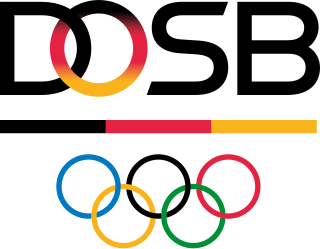
The German Olympic Sports Confederation was founded on 20 May 2006 by a merger of the Deutscher Sportbund (DSB), and the Nationales Olympisches Komitee für Deutschland (NOK) which dates back to 1895, the year it was founded and recognized as NOC by the IOC.

Heinrich August Trinowitz (born 20 May 1879 in Fichthorst; died 10 January 1929 in Königsberg was a notable German unionist and social democratic politician.
The General German Trade Union Federation was a confederation of German trade unions in Germany founded during the Weimar Republic. It was founded in 1919 and was initially powerful enough to organize a general strike in 1920 against a right-wing coup d'état. After the 1929 Wall Street crash, the ensuing global financial crisis caused widespread unemployment. The ADGB suffered a dramatic loss of membership, both from unemployment and political squabbles. By the time the Nazis seized control of the government, the ADGB's leadership had distanced itself from the Social Democratic Party of Germany (SPD) and was openly cooperating with Nazis in an attempt to keep the organization alive. Nonetheless, on May 2, 1933, the SA and SS stormed the offices of the ADGB and its member trade unions, seized their assets and arrested their leaders, crushing the organization.

The German Metal Workers' Union was a German industrial union for metalworkers formed in 1891 and dissolved after the Nazis' accession to power in 1933.
Georg Streiter was a German politician of the German People's Party (DVP).
Reichsvereinigung der Deutschen Gewerkschaften was a trade union centre in the First Czechoslovak Republic. The organization had its headquarters on Krakovská street 11 in Prague. Initially the Reichsvereinigung grouped all the main German nationalist, or völkisch, trade unions in the Sudetenland. As of 1921, the affiliates of the Reichsvereinigung claimed to have 49,500 members. By the end of 1928, the organization claimed to have 51,500 members. The Reichsvereinigung was a supposedly apolitical body for German workers.
Verband deutscher Gewerkschaften was a German Nazi trade union centre in Czechoslovakia. The organization was formed in 1929, by eight unions that broke away from the Reichsvereinigung der deutscher Gewerkschaften. At the time of the founding of Verband deutscher Gewerkschaften, its affiliates claimed a combined membership of 46,700. The organization had its headquarters in Ústí nad Labem.
The German Tobacco Workers' Union was a trade union representing people in the tobacco manufacturing industry in Germany.

The German Clothing Workers' Union was a trade union representing people involved in making clothing in Germany.

The German Wood Workers' Union was a trade union representing carpenters, joiners, and related workers, in Germany.

The German Hat Workers' Union was a trade union representing hatters in Germany.

The German Agricultural Workers' Union was a trade union representing agricultural and forestry workers in Germany.

The Union of Municipal and State Workers was a trade union representing public sector workers in Germany.
The German Leather Workers' Union was a trade union representing workers involved in tanning and glovemaking.
Fritz Müntner was a German trade union leader.
The Central Union of Bakers and Confectioners was a trade union that played a significant role in representing workers in bakeries and related trades in Germany.

The German Furriers' Union was a trade union representing fur workers in Germany.
The Union of Saddlers and Portfolio Makers was a trade union representing workers involved in making saddles, bags and wallets.
The Union of German Restaurant Workers was a trade union representing workers in hotels and restaurants in Germany.
The International Federation of Saddlers' Unions was a global union federation uniting trade unions representing workers involved in making saddles and related products.









